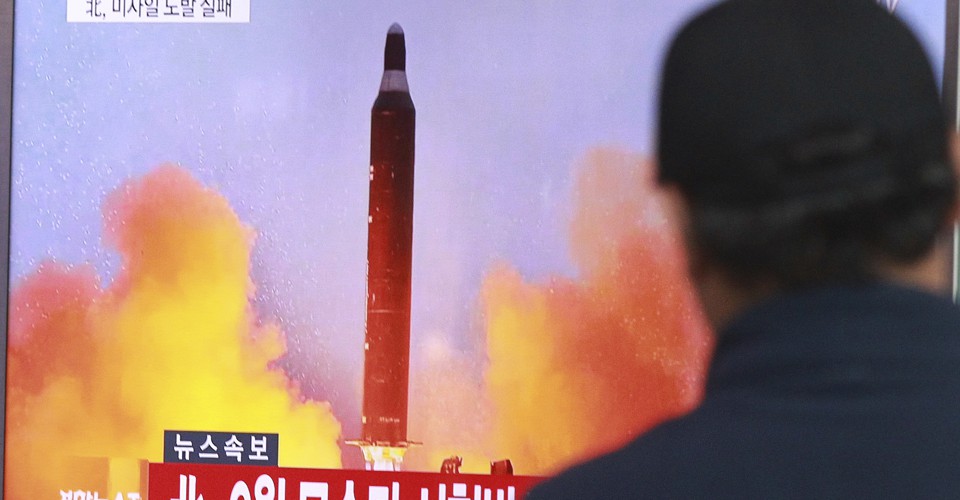 North Korean officials recently announced that the country was on the verge of testing a nuclear-tipped intercontinental ballistic missile, or ICBM, that could reach the United States. President-elect Donald Trump drew a line in the sand. “Won’t happen,” he said on Twitter. If North Korea attempts to test an ICBM, the United States has a number of options to stop it. All carry risks.
North Korean officials recently announced that the country was on the verge of testing a nuclear-tipped intercontinental ballistic missile, or ICBM, that could reach the United States. President-elect Donald Trump drew a line in the sand. “Won’t happen,” he said on Twitter. If North Korea attempts to test an ICBM, the United States has a number of options to stop it. All carry risks.
Trump’s red line mirrored past statements from policymakers. Ten years ago, future Defense Secretary Ash Carter and former Defense Secretary William Perry wrote , “Should the United States allow a country [North Korea] openly hostile to it and armed with nuclear weapons to perfect an intercontinental ballistic missile capable of delivering nuclear weapons to U. S. soil? We believe not.”
How close is North Korea to an actual nuclear ballistic missile and what are the president’s military and policy options? Let’s take a look.
North Korea is researching a variety of missiles that with research and development could be converted into ICBMs. In February, North Korea launched a satellite into orbit aboard its 28-meter, three-stage Unha rocket.
“Several U. S. four-star commanders have said North Korea has, or we must assume they have, the ability to reach the continental U. S. with a nuclear warhead with the Taepo Dong (Unha) missile,” said Bruce Klinger, an analyst with the conservative Heritage Foundation think tank. The Unha has a range of 10,000 kilometers, sufficient to hit the United States. Klinger argues that the range might be closer to 13,000 kilometers, enough to reach the East Coast.
But shooting a satellite into space is a different feat of physics than demonstrating an ICBM, which must re-enter the earth’s atmosphere along a controlled and precise trajectory to its target.
“The Unha-2 or -3 could serve as a springboard for the development of an ICBM, but the history of long-range missile development by other countries, including the Soviet Union, the United States, China, and France, indicates that satellite launch activities have limited impact on missile programs. No country has converted a satellite launch rocket into a long-range ballistic missile,” according to Michael Elleman and Emily Werk of the Arms Control Association.
A more likely candidate for a near-term ICBM test is the 16-meter-long KN-08 ballistic missile. It can be launched via a truck platform, making it harder to hit with a pre-emptive strike. It currently has a documented range of about 6,700 kilometers, due to fuel limitations. In April 2016, North Korea unveiled photos of an engine test that purported to show a new rocket engine capable, potentially, of sending a nuclear warhead to the United States.
“Using this technology, North Korea’s road-mobile intercontinental ballistic missile (ICBM), the KN-08 or the KN-14 modification, could deliver a nuclear warhead to targets at a distance of 10,000 to 13,000 kilometers. That range, greater than had previously been expected, could allow Pyongyang to reach targets on the U.






